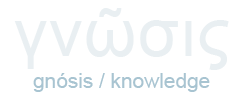Addressing 'blind' consent : a study on users perception on privacy policies and a tool to enhance their understanding of them

View/
Date
2024-05Publisher
Πανεπιστήμιο Κύπρου, Σχολή Θετικών και Εφαρμοσμένων Επιστημών / University of Cyprus, Faculty of Pure and Applied SciencesPlace of publication
CyprusGoogle Scholar check
Keyword(s):
Metadata
Show full item recordAbstract
This research was conducted in the context of the University of Cyprus, Computer Science
Master’s Dissertation. The research’s purpose was to define and address the gap between
Privacy Policies comprehension by end-users and their ‘Blind’ Consent. In order to achieve
this, research was conducted in terms of Privacy in Software Engineering and Usable Privacy.
This dissertation initially provides a Systemization of Knowledge through comparative tables
reviewing the literature and finding common ground between research papers. After that, the
need to create a software tool arose in order to assess user’s understanding in various types of
online platforms through an easy-to-use visual form. This was done through the OhKéy
platform, where existing web platforms’ Privacy Policies were gathered, the GDPR part was
extracted, anonymized and grouped in small ‘clickable boxes’ based on their GDPR context.
Users could select each one to assess their text in terms of comprehensibility based on a set of
pre-defined terms using a one-to five Likert scale rating. 1098 annotations were gathered in
total. This thesis , towards achieving the initial objectives, analyzed in depth the negative
annotations. The result showed crucial need for Enhancing privacy policies with elements that
will address the issues recognized. Therefore the AlRíght Policy Generation tool links Policy
Makers and end-users by introducing a panel for Policy Makers and Web Developers to insert
the Privacy Policy text and along with other functionalities like summaries, important question
answering and media, to create an Enhanced Privacy Policy form. The outcome could be
downloaded by the Policy Makers and Web developers in order to be used in their actual
platforms. The tool’s purpose was to address ‘Ambiguity’, ‘Vagueness’, ‘Language Difficulty’,
‘Verbosity’ ‘Suspiciousness’ and ‘Complexity’ by providing users with many options through
the policy reading procedure. Very positive results of the AlRíght tool were gathered in two
different surveys regarding User Experience (with Policy makers and Web developers) and
End-users evaluation.
Collections
Cite as
The following license files are associated with this item:

